More than 30 popular coastal areas in Taiwan are potential rip current hot spots, National Cheng Kung University’s Coastal Ocean Monitoring Center said on Monday.
The findings are the result of a study the center conducted with backing from the Central Weather Bureau that utilized satellite images and coastal photographs.
The hot spots include Baishawan (白沙灣) beach in New Taipei City’s Shihmen District (石門), Yuguang Island (魚光島) in Tainan, Sizihwan Bay (西子灣) in Kaohsiung and Pingtung County’s Kenting (墾丁), all of which should consider installing alarm systems, center director Doong Dong-jiing (董東璟) said.
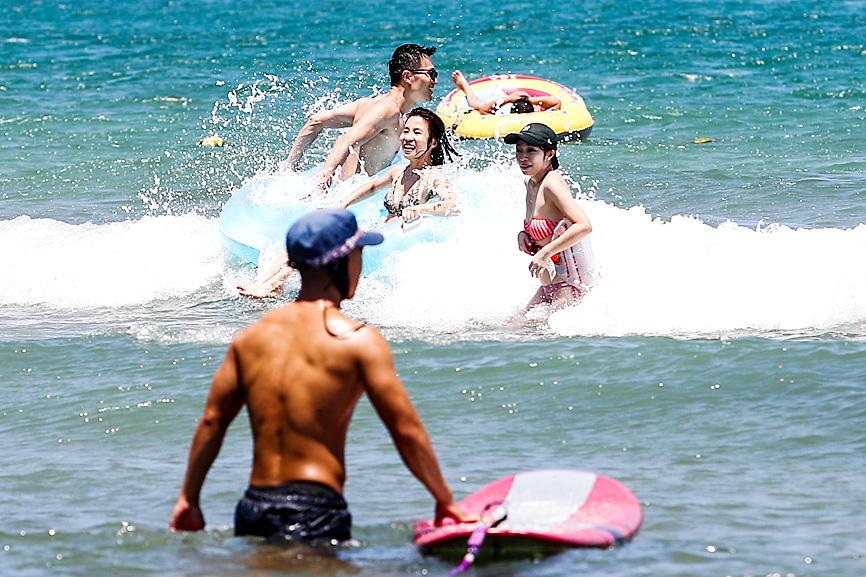
Photo: CNA
Rip currents are offshore currents that move perpendicular to the coastline. They are formed by coastal terrain and waves breaking near the shore.
They are one of the major causes of swimming injuries and drowning, Doong said.
Rip currents are difficult to spot with the naked eye due to their irregular occurrence, but more accurate observations have become possible with advanced technology such as satellite imagery and video monitoring, he said.
Each method has its restrictions, Doong said.
The satellites used in the study could take only one picture per day, while a video camera can record useful footage only during daytime, he said.
People caught in a rip current should wave their hands to draw attention, but not struggle against the current to save their strength so that they can make it back to the shore when the current abates, he said.
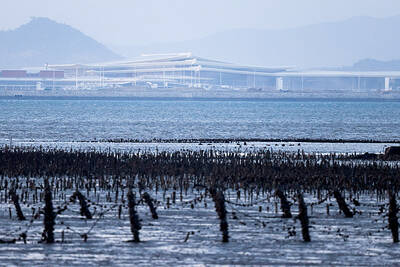
UNILATERAL MOVES: Officials have raised concerns that Beijing could try to exert economic control over Kinmen in a key development plan next year The Civil Aviation Administration (CAA) yesterday said that China has so far failed to provide any information about a new airport expected to open next year that is less than 10km from a Taiwanese airport, raising flight safety concerns. Xiamen Xiangan International Airport is only about 3km at its closest point from the islands in Kinmen County — the scene of on-off fighting during the Cold War — and construction work can be seen and heard clearly from the Taiwan side. In a written statement sent to Reuters, the CAA said that airports close to each other need detailed advanced
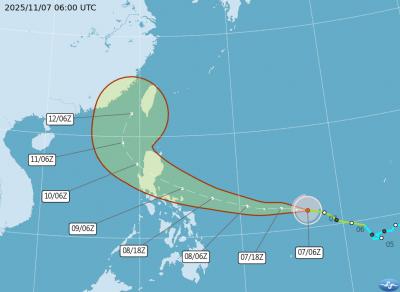
Tropical Storm Fung-Wong would likely strengthen into a typhoon later today as it continues moving westward across the Pacific before heading in Taiwan’s direction next week, the Central Weather Administration (CWA) said. As of 8am, Fung-Wong was about 2,190km east-southeast of Cape Oluanpi (鵝鑾鼻), Taiwan’s southernmost point, moving westward at 25kph and possibly accelerating to 31kph, CWA data showed. The tropical storm is currently over waters east of the Philippines and still far from Taiwan, CWA forecaster Tseng Chao-cheng (曾昭誠) said, adding that it could likely strengthen into a typhoon later in the day. It is forecast to reach the South China Sea
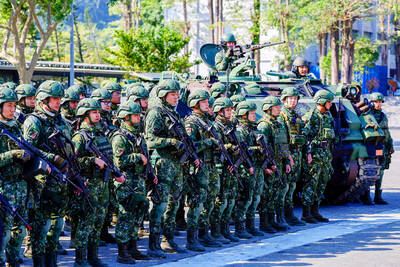
Almost a quarter of volunteer soldiers who signed up from 2021 to last year have sought early discharge, the Legislative Yuan’s Budget Center said in a report. The report said that 12,884 of 52,674 people who volunteered in the period had sought an early exit from the military, returning NT$895.96 million (US$28.86 million) to the government. In 2021, there was a 105.34 percent rise in the volunteer recruitment rate, but the number has steadily declined since then, missing recruitment targets, the Chinese-language United Daily News said, citing the report. In 2021, only 521 volunteers dropped out of the military, the report said, citing
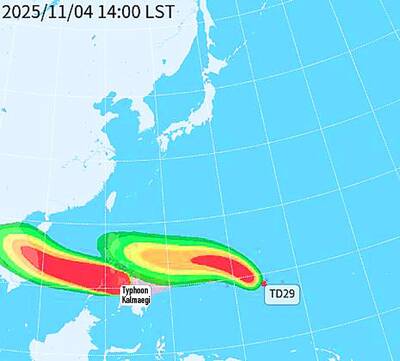
WEATHER Typhoon forming: CWA A tropical depression is expected to form into a typhoon as early as today, the Central Weather Administration (CWA) said yesterday, adding that the storm’s path remains uncertain. Before the weekend, it would move toward the Philippines, the agency said. Some time around Monday next week, it might reach a turning point, either veering north toward waters east of Taiwan or continuing westward across the Philippines, the CWA said. Meanwhile, the eye of Typhoon Kalmaegi was 1,310km south-southeast of Oluanpi (鵝鑾鼻), Taiwan’s southernmost point, as of 2am yesterday, it said. The storm is forecast to move through central